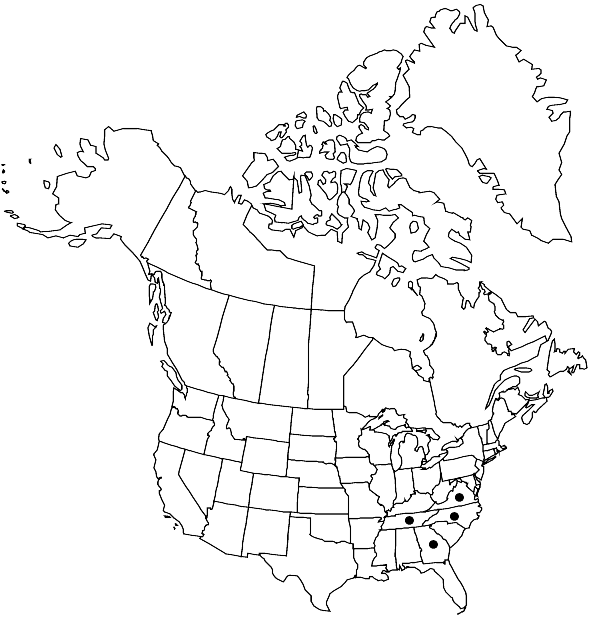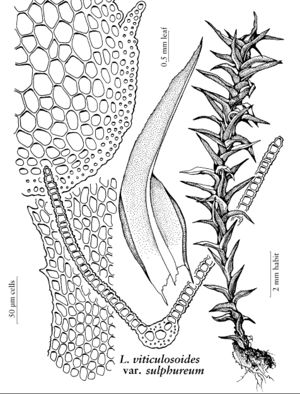Leptodontium viticulosoides var. sulphureum
Bryologist 86: 156. 1983,.
Stems to 5 cm. Leaves 2.0–2.5 mm, longlanceolate, not bordered by differentiated cells; apex narrowly acute; costa percurrent, abaxially smooth; distal laminal cells 8–11 µm wide, 1: 1 or medially longitudinally elongate to 2: 1, walls thickened throughout the distal portion of the leaf, lumens irregularly rounded, proximal cell-walls thickened and porose above but thin-walled below.
Habitat: Mainly on branches of balsam fir (Abies balsamea), also Sorbus
Elevation: moderate to high elevations (1700-2100 m)
Distribution

Ga., N.C., Tenn., Va., Mexico, Central America, South America
Discussion
Only archegoniate plants of var. sulphureum appear in the flora area. The description here is based solely on populations in that area; the variety has otherwise a large synonymy (see R. H. Zander 1972). The typical variety is widely distributed, but this one is known only from the New World. The southern Appalachian plants are flagellate (with distant leaves that become smaller distally) in comparison with most populations in Latin America but are matched by certain specimens from Mexico. The Appalachian plants are not autoicous as reported by H. A. Crum and L. E. Anderson (1981); perhaps galls, seen in some specimens, were mistaken for perigonia. The distribution of this taxon in the southern Appalachians is associated with the spread of the balsam woolly aphid; damaged, defoliating bark is preferentially colonized by this moss. The priority of the epithet “sulphureum” at the rank of variety as an autonym is due to the valid publication of the Lorentz name L. sulphureum var. panamense.
Selected References
None.
